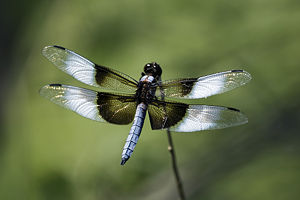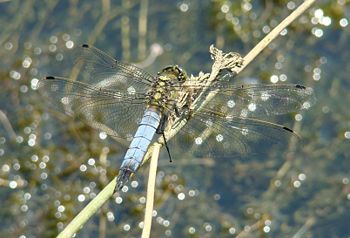Dragonfly: Difference between revisions
Jump to navigation
Jump to search

imported>Igor Grešovnik m (added bibliography) |
imported>Igor Grešovnik m (→Bibliography) |
||
| Line 37: | Line 37: | ||
==Bibliography== | ==Bibliography== | ||
Richard E. White (Illustrator), Donald J. Borror (Illustrator), Roger Tory Peterson (Series Editor). A Field Guide to Insects. Houghton Mifflin, 1998. ISBN 978-0395911709. | Richard E. White (Illustrator), Donald J. Borror (Illustrator), Roger Tory Peterson (Series Editor). A Field Guide to Insects. Houghton Mifflin, 1998. ISBN 978-0395911709. | ||
[http://www.itis.gov/ Integrated Taxonomic Information System]. | |||
Revision as of 14:05, 22 July 2008
| Dragonfly | ||||||||||||||||||
|---|---|---|---|---|---|---|---|---|---|---|---|---|---|---|---|---|---|---|
 (CC) Photo: John Wright
| ||||||||||||||||||
| Scientific classification | ||||||||||||||||||
| ||||||||||||||||||
| Families | ||||||||||||||||||
Dragonflies are insects belonging to the order Odonata, the infraorder Anisoptera. They are characterized by an elongated body, two pairs of strong, usually transparent wings, and large multifaceted eyes. Eyes touch in most species. Wings are held perpendicular to the body when at rest. Hindwings broaden near the base. The last three features can be used to distinguished dragonflies from damselflies.
Bibliography
Richard E. White (Illustrator), Donald J. Borror (Illustrator), Roger Tory Peterson (Series Editor). A Field Guide to Insects. Houghton Mifflin, 1998. ISBN 978-0395911709.
